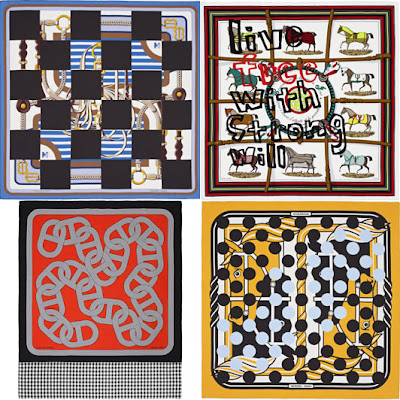OVERVIEW
As the fantastically established Japanese designer behind the Comme des Garcons label, Rei Kawakubo has had a tremendous impact on the fashion industry. Her ability to utilise abstract shape and colour, in my opinion, has helped to shape a whole new outlook on our creativity in the way we dress ourselves. Japanese fashion has always been renowned for its sculptural, sometimes controversial approach to fashion and I think partly due to the popularity of Dover Street Market, Rei Kawakubo has done a great job of filtrating this attitude towards silhouette and overall boldness in personal aesthetic into the British fashion industry; and in return it has been received incredibly well. Unlike European and British fashion, Japanese fashion has the tendency to conveniently ignore the conventional focus on the silhouette of the female body and how clothing can flatter the form but instead focuses on how concepts and abstract shapes can be applied to the body in a three dimensional way. They choose to consider how conventional methods of dressing the body and constructing garments can be changed, manipulated and taken apart to create something dramatic and innovative rather than particularly aesthetically pleasing or functional; all of which I think Kawakubo is the most successful. Rei Kawakubo founded Comme des Garcons as a womenswear label in 1973 and later in 1978 added a menswear line. As quoted from http://www.designboom.com/portrait/comme_bio.html "for many, Kawakubo's arrival in the west, with the first Paris presentation of her collection in 1981, was something of a shock. She presented clothes the challenged accepted conventions. the collection was dubbed 'hiroshima chic' for its use of darkcolors, in particular black, which was not popular at the time."FAVOURITE COLLECTIONS
 | |
| Comme des Garcons Fall 2009 RTW |
 |
| Comme des Garcons Spring 2012 RTW |
 |
| Comme des Garcons Fall 2012 RTW |
The Fall 2012 RTW collection is a stand out favourite collection for me purely due to it's simplicity and daring bold colour and shape of the exact aesthetic which designers avoid; the two dimensional. As quoted by Tim Blanks in his Style.com review in reaction to trend guru Li Edelkoort's negative comments towards online fashion show documentation, "all that detail going on in back, but who was aware of it, bar the few hundred people in the live audience? Maybe that's why so many designers have been talking about "tri-dimensionality" this season. And maybe that's why the ever you-go-north-I'll-go-south Rei Kawakubo chose this particular moment to present a show that glorified the flat. "The future's in two dimensions" was its provocative premise, and fans of Flat Stanley would have wallowed in the cutout paper-dolliness of looks like the red and pink felted coat-dresses that opened the show, or the lilac jacket and pants that followed. The only thing missing was the little paper tabs. But as the collection moved on, it felt less like Rei was being a contrary Mary than that she was actually making a comment on the state of the industry.
COLLABORATION
H&M
"The famously avant-garde Japanese label, spearheaded by design powerhouse Rei Kawakubo, will provide a range of both men's and womenswear, as well as childrenswear, accessories and a new unisex fragrance for the retailer. In honour of its Japanese roots, the collaborative line will launch exclusively at H&M in Tokyo in November before being rolled out worldwide a few days later." (http://www.vogue.co.uk/news/2008/04/03/comme-des-garcons-for-handm)PRESS RELEASE: comme_des_garcons_exclusive_collection_for_hm
HERMES
Although I'm not a huge fan of the application of pattern and surface design in my own work, I am really drawn to it in other peoples' collections and this is a perfect example of the kind of thing I like. The combination of traditional and abstract is a very recognisable aesthetic from Rei Kawakubo and by reworking six of the Hermes designs into limited edition pieces, they look set to be a great success. This 'vintage' silk scarf design has been very popular in recent years with young fashionstas utilising it as a way of giving their look a traditional edge.
"Kawakubo proved to be a 'very easy' and 'very nice' partner-in-crime.
'She knows what she wants,' Barret says, and was a seamless fit for
Hermès, where collaboration is termed 'as opening the door, giving the
keys and saying, let's have fun. ' An introductory meeting was followed
by a second at the Hermès flagship shop in Paris, where Kawakubo was
shown 250 scarves from the archives, 'so she could figure out what the
treasure was,' Barret says. Kawakubo 'looked, watched and touched
everything' and then asked 'a ton of technical questions'. 'She was very
sharp and precise about printing,' Barret adds.
'And that was very exciting.' Afterwards, Kawakubo asked for coloured
copies of all the designs, from the 1950s, the 1970s and the present
day, which would allow her to 'think about it and to know what to do'.
At that time, there had been no mention of how many pieces she planned
to create. But a few months later Kawakubo's designs for the two
collections, Noir et Blanc and Couleur, appeared." (http://fashion.telegraph.co.uk/article/TMG9809180/Stablemates-Rei-Kawakubo-collaborates-with-Hermes.html)




















